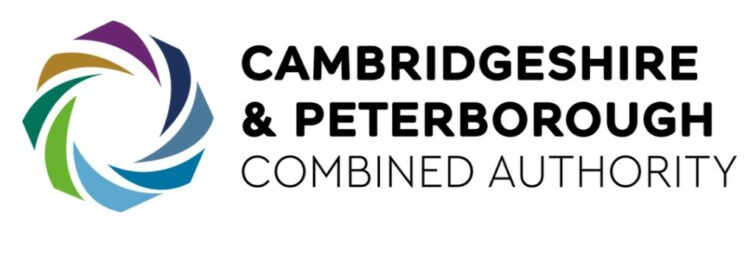Auditors have issued a disclaimer of opinion on the Cambridgeshire and Peterborough Combined Authority’s 2024/25 accounts, citing missing loan agreements, poor documentation and control weaknesses. The report warns these issues could affect future funding unless urgent improvements are made. The Cambridgeshire and Peterborough Combined Authority (CPCA) remains under intense financial scrutiny after its latest external audit again highlighted “significant control weaknesses” and documentation lapses.
In a report to be presented to the Audit and Governance Committee on November 11, auditors Ernst & Young LLP (EY) said the CPCA’s financial system is “still in recovery” following years of disruption in the local government audit sector.
“There is general agreement that the backlog in the publication of audited financial statements by local bodies has grown to an unacceptable level.”
— Ernst & Young LLP, Audit Results Report 2025
While EY said the Authority’s progress in “rebuilding assurance” is broadly in line with national expectations, the latest findings reveal continuing risks that must be addressed before full confidence can return.
The most serious finding: a disclaimer of opinion
The auditors issued a disclaimer of opinion — the most severe form of audit qualification — on the 2024/25 accounts. In simple terms, EY could not obtain enough evidence to confirm the accuracy of the Authority’s financial statements.
“We have not been able to obtain sufficient appropriate audit evidence to provide a basis for an audit opinion on these financial statements.”
— Audit Report, p.22
The disclaimer stems from unresolved issues in previous years’ accounts, meaning the auditors still cannot verify some of the Authority’s opening balances.
“As a result of the disclaimer of opinion on the 2023/24 financial statements, we do not have assurance over all 2024/25 in-year movements and the comparative prior year movements.”
— Executive Summary, p.5
Weaknesses in financial controls
One of the most striking findings relates to journal authorisation — a basic internal safeguard against manipulation of financial data.
“The Authority does not have any formal procedure for the authorisation of manual journals before they are posted to the General Ledger.”
— Assessment of Control Environment, p.30
EY described this as a “weakness in the overall control environment” and warned it increases the risk of management override. They recommended that the Authority introduce a formal approval process for all manual journal entries.
Although no evidence of fraud was found, auditors said the gap must be closed urgently to strengthen the Authority’s financial discipline.
Missing signatures and the risk to loans
Another area of concern was the handling of loan agreements. EY discovered that some loan facility documents were undated and unsigned by either party — a lapse that could have legal and financial consequences.
“Some Loan Facility Agreements were found to be undated and unsigned by either party, indicating a control weakness in the loan approval process.”
— Assessment of Control Environment, p.30
Properly executed loan agreements are vital to ensure enforceability and protect public money. Without signatures and dates, the Authority could struggle to prove that the terms were agreed — or even to recover funds if disputes arise.
“We recommend that the Authority implements controls to ensure all loan agreements are properly dated and signed by both parties to confirm mutual acknowledgement and enforceability.”
— EY Recommendation
Why it matters: lenders and investors routinely review audit findings when deciding whether to provide funding. Weak documentation could lead to tougher borrowing conditions or higher costs and may undermine confidence among government funders.
Portland Training: a missing contract variation
Auditors also drew attention to missing paperwork in a contract with Portland Training, a third-party provider.
“A signed contract variation relating to Portland Training was not retained by the Authority, which prevented full verification of the sample during testing.”
— Assessment of Control Environment, p.30
Without the signed variation, auditors could not confirm that the changes to the contract were properly authorised or that payments were made under approved terms. EY urged the Authority to ensure that “all contract variations are appropriately retained to support the audit trail.”
This issue, though specific, highlights a wider problem: inconsistent record-keeping. Without full documentation, the Authority cannot demonstrate compliance with procurement and spending rules — a critical condition for public funding.
Other financial risks highlighted
Beyond loans and contract documentation, EY identified several other areas requiring improvement:
- Grant income timing: Two third-party claim forms related to expenditure incurred before the 2024/25 period, suggesting income was recognised in the wrong year.
“We recommend that the Authority enhance its monitoring of multi-year projects.”
- Group consolidation and valuations: The valuation of group investment properties and the consolidation of subsidiary accounts were again flagged as significant risks.
“Given the complexity of the group structure… we have elevated this area to a significant risk.”
- Pension Fund audit delays: EY is awaiting assurance from the Cambridgeshire Pension Fund auditor, with results due in November 2025.
Two material accounting adjustments — totalling over £8 million — were identified and corrected during the audit.
Impact on future funding
The implications of these findings could extend beyond accounting. Weak controls and incomplete documentation can directly affect future funding opportunities from both central government and commercial lenders.
Government departments and agencies require strong assurance before releasing devolved funds. Persistent audit disclaimers can lead to stricter grant conditions, delays, or even reductions in funding.
Commercial lenders, meanwhile, may demand higher interest rates or guarantees if they perceive governance risks.
“This represents a level of weakness in the Authority’s overall control environment and increases the potential risk of Management Override.”
— EY, on loan documentation
While there is no suggestion of fraud or mismanagement, repeated weaknesses can damage public trust and make it harder for the Authority to attract investment for major projects.
Some progress — but more work ahead
Not all findings were negative. EY praised the finance team’s overall preparation of the accounts, noting that:
“The draft accounts were prepared to a good standard, with only a limited number of non-material internal inconsistencies noted.”
However, they also found that some evidence was incomplete or delayed:
“In several instances, submissions lacked clarity or completeness, requiring follow-up queries to resolve gaps.”
On value for money, the auditors’ conclusion was positive — no significant weaknesses were found in the Authority’s arrangements.
“We have not identified any risks of significant weaknesses in arrangements and therefore expect to have no matters to report by exception.”
— Value for Money, p.20
A financial system in transition
The CPCA’s journey toward full audit assurance is expected to continue into 2026/27. EY described the progress as “in line with expected timescales,” but stressed that sustained improvement will be essential to achieve an unqualified opinion.
For residents and taxpayers, the message is one of cautious optimism. The systems are improving — but until the Authority demonstrates stronger controls and complete documentation, the auditors’ disclaimers are likely to continue.
“The Authority’s financial controls are improving, but significant risks remain.”
The CPCA now faces a clear challenge: turn audit recommendations into visible reform, tighten its governance, and rebuild confidence in how it manages public money.
Source: External Audit Cambridgeshire and Peterborough Combined Authority Audit Results Report (2025), Ernst & Young LLP.




















